Human-centric leadership is leadership done differently. It puts people first, focusing on their wellbeing and satisfaction. Human-centric leaders lead with empathy and authenticity – showing genuine care and respect for the concerns and wellbeing of their employees. In the past, these traits for the most part were “nice-to-haves,” but today, employees demand them. We asked our team of experts what specific characteristics they see in a human-centric leader. They also share instances in which they witnessed human-centric leadership firsthand in their clients.
Answers From the Experts:
 Lyn Turknett, Co-founder and Co-chair, TLG
Lyn Turknett, Co-founder and Co-chair, TLG
What particular characteristics do you see as part of human-centric Leadership?
Human-centric leaders give employees discretion in how they do their work and as much autonomy as possible. We know from research that a lack of control is stress-inducing and demotivating, and can lead to increased risks for diabetes and heart disease. They also explicitly put people first. Alan Mulally, the CEO best known for his turnaround at Ford, had one of the most rigorous and complete systems imaginable for cross-company accountability, the Business Process Review, but he led with extreme respect for people at all levels – and the expectation that senior leaders would do the same. His “Working Together” system had twelve principles, and the first two were People First – Love ‘em up, and Everyone is Included. He changed the way senior leaders related to each other as well – and banned joking at the expense of others.
One of the most extreme examples of worker autonomy can be found at Haier, which Gary Lawler sees as a prime example of what he terms Humanocracy. It’s a way of thinking about organizing organizations that takes advantage of every brain.
 Tim Huff, VP of Leadership Development, TLG
Tim Huff, VP of Leadership Development, TLG
What particular characteristics do you see as part of human-centric Leadership?
As a life-long student of leadership, I’ve enjoyed seeing the evolving trend towards servant leadership and other human-centric leadership approaches and away from command-and-control styles of leadership in the workplace. The evidence from many studies, leadership experts, and successful leaders has been consistent in showing human-centric leadership as being more successful and yielding more benefits. As defined by Gartner, human-centric leadership includes such characteristics as authenticity, empathy, and adaptability. Other sources include listening, emotional intelligence, communication, and humility as key human-centric traits. We can also include traits like mentoring, empowering, and encouragement on the list. All these traits align with the “Respect” side of the Turknett Leadership Character Model, which is an excellent reference to human-centric leadership.
One powerful characteristic that I think needs to be highlighted as key to human-centric leadership is the ability to be a good coach. A leader who understands what coaching is (and what it isn’t) and how to effectively be a coach to team members can be a major catalyst for excellent productivity, team member growth, and strong team culture. Being a good coach involves taking the time and effort to be truly present with others one-on-one, being empathetic and a great listener, and employing a high degree of emotional intelligence. The value that can be gained from a team member who truly feels respected, supported, and invested in through coaching can super-charge a team.
Can you share a story around the shift to human-centric leadership from your coaching experience?
A few years ago, I was a coach to a senior manager client in a technology organization supporting a large for-profit company. This leader was very successful in the technical aspects of his role and was respected in the IT team as the subject matter expert in many technology functions. He was also well-known and respected as a great technologist among many business leaders in the company. His challenge, however, was his engagement style with his team members and many of his peers. In his 360-degree assessment, he was described as a know-it-all, not collaborative, and even a bully. Although he was a bit resistant to the feedback early on, as he progressed through the coaching engagement, he realized he could achieve a better result with people by trying on a different approach. As he learned how to talk less and listen more, lead with curiosity instead of judgment, and proactively seek out others’ opinions, he began to develop trust and relationship bonds with his team and peers that were much more effective. Over time, he incorporated more human-centric leadership traits like humility and empathy that further improved his impact on his team and peers. Although the transition from a self-centered style to a human-centric style was a challenge for him, he achieved greater success than he expected! Laurie Arron, Executive Coach and TLG Strategic Partner
Laurie Arron, Executive Coach and TLG Strategic Partner
What particular characteristics do you see as part of human-centric Leadership?
As someone with over 27 years of experience at a Fortune 10 company, I have seen many wonderful leaders who embody human-centric leadership. In my view, this type of leadership is essential for creating a positive and productive work environment. It involves putting people first and showing empathy, compassion, and respect toward team members. As a leader, I prioritize the well-being and growth of my team, and I encourage collaboration and foster a culture of continuous learning and improvement. Having seen the positive impact of human-centric leadership, I believe it’s not just about achieving business goals, but also about making a difference in people’s lives and building lasting relationships with them.
Can you share a story around the shift to human-centric leadership from your coaching experience?
Throughout my career, I have seen many leaders struggle with the transition to human-centric leadership. As a coach, I’ve had experiences working with senior leaders who were initially resistant to change. They were concerned that focusing too much on the well-being of their team members would negatively impact productivity. However, through patience and persistence, I showed them how small changes can make a big difference. For instance, actively listening to team members and acknowledging their contributions can go a long way in improving morale and productivity. Over time, I have seen even the most resistant leaders become champions of human-centric leadership once they see the positive impact it has on their team members and the business. My experience has taught me that human-centric leadership is not only essential for creating a supportive and inclusive work environment, but it’s also crucial for the long-term success of the organization.
 Alex Auerbach, Ph.D., Senior Consultant, TLG
Alex Auerbach, Ph.D., Senior Consultant, TLG
What particular characteristics do you see as part of human-centric Leadership?
The main characteristics I think are involved in human-centric leadership are compassion, individualized consideration, and a focus on autonomy. I think people want kind leaders who care about them as people, and who understand they have unique needs. People also want to be empowered to get their work done in the way they think is best. These three characteristics allow employees to express themselves fully through their work and feel connected and supported.
Can you share a story around the shift to human-centric leadership from your coaching experience?
I worked with a venture-backed start-up founder who had to lay off some staff. Originally, he was considering doing it in the “textbook”, impersonal manner – but that didn’t fit who he was as a person or the culture he tried to create. As we worked together, he was able to really appreciate the humanity and experience of everyone he was forced to let go, which led to a longer, more curated and connected layoff process. Though this was more emotionally draining, it sent a clear message to the rest of the company about how much this leader cared for his people and recognized what they needed.
 Demi Gray, Ph.D., Senior Consultant, TLG
Demi Gray, Ph.D., Senior Consultant, TLG
What particular characteristics do you see as part of human-centric Leadership?
Just being humanistic. That’s what that means to me – being a person. I lead and communicate by the golden rule, treat others as you want to be treated. Being in a position where you can reciprocate, and not necessarily reciprocating bad behaviors or bad touchpoints, but again, reinforcing, “This is how I’d like to be managed or led,” or “This is how I’d like to be communicated to as a peer within an organization.” So similarly, this would be the case for me when I’m leading, communicating, and engaging with others.
Being humanistic is treating everyone on the same level. I don’t necessarily treat anyone differently just because they are male versus female or if they work in a different division than I do, or if they may be a lower-level team member. I feel like from a humanistic perspective, we’re all people. At the end of the day, we all have emotions, feelings, lives, and personal situations that we’re dealing with outside and inside of the workplace. Leading in a human-centric place is just being grounded and treating people respectfully.
Explore the rest of our team!

